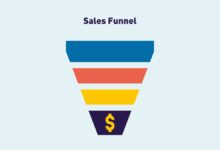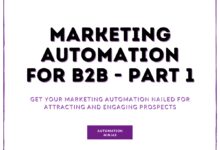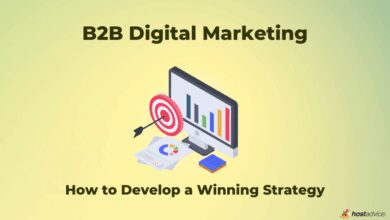B2B Content Automation: 7 Powerful Strategies to Skyrocket Efficiency
In today’s fast-paced digital landscape, B2B content automation isn’t just a luxury—it’s a necessity. Companies that leverage smart automation tools are scaling their content output, boosting engagement, and driving conversions like never before.
What Is B2B Content Automation and Why It Matters

B2B content automation refers to the use of technology and software platforms to streamline the creation, distribution, optimization, and analysis of content specifically tailored for business-to-business marketing. Unlike B2C, where emotional appeal often drives decisions, B2B buyers rely on data, logic, and long-term value—making high-quality, consistent content essential at every stage of the buyer’s journey.
Defining B2B Content Automation
At its core, B2B content automation involves using intelligent systems to reduce manual effort in content workflows. This includes automating tasks like content ideation, drafting, editing, publishing, social media sharing, email campaigns, and performance tracking. The goal is not to replace human creativity but to amplify it by eliminating repetitive, time-consuming processes.
- Automated content generation using AI-driven tools
- Scheduling and publishing across multiple platforms
- Dynamic personalization based on user behavior
- Real-time analytics and performance reporting
According to a report by Gartner, over 60% of B2B marketers now use some form of automation in their content strategy, with measurable improvements in lead generation and customer retention.
How It Differs from Traditional Content Marketing
Traditional content marketing relies heavily on manual processes: brainstorming sessions, writer assignments, editorial calendars, and manual distribution. While effective, this approach often leads to bottlenecks, inconsistent output, and delayed responses to market changes.
In contrast, B2B content automation introduces speed, scalability, and precision. For example, while a traditional team might take weeks to produce a whitepaper, an automated system can generate a first draft in hours using AI, then route it through approval workflows, optimize it for SEO, and publish it across channels—all without human intervention after initial setup.
“Automation doesn’t make content soulless—it makes it smarter, faster, and more relevant.” — Ann Handley, Chief Content Officer at MarketingProfs
The Evolution of B2B Content Automation
The journey of B2B content automation has been shaped by technological advancements, shifting buyer expectations, and the growing complexity of digital ecosystems. From basic email autoresponders to AI-powered content engines, the evolution reflects a deeper understanding of how businesses consume information.
From Email Campaigns to AI-Driven Platforms
Early forms of B2B content automation were limited to email marketing tools like Mailchimp or Constant Contact, which allowed businesses to send scheduled messages to segmented lists. These tools laid the foundation for personalization and triggered messaging based on user actions.
Today, platforms like HubSpot and Marketo offer end-to-end automation suites that integrate CRM data, behavioral tracking, and AI-generated content recommendations. These systems can dynamically adjust messaging based on a prospect’s industry, role, engagement level, and even real-time intent signals.
Key Milestones in B2B Automation History
- 2005–2010: Rise of marketing automation platforms focused on lead nurturing and drip campaigns.
- 2011–2015: Integration of CRM systems with marketing tools, enabling better lead scoring and segmentation.
- 2016–2020: Emergence of AI in content creation, with tools like Acrolinx and Persado optimizing language for maximum impact.
- 2021–Present: Full-stack content automation ecosystems combining generative AI, predictive analytics, and omnichannel distribution.
This progression shows a clear shift from isolated automation tasks to holistic, intelligent content operations.
Core Benefits of B2B Content Automation
Implementing b2b content automation offers transformative advantages for organizations aiming to stay competitive in a content-saturated market. It’s not just about doing things faster—it’s about doing them smarter and with greater impact.
Increased Efficiency and Scalability
One of the most immediate benefits of b2b content automation is the dramatic reduction in time spent on routine tasks. Writers no longer need to start from scratch for every blog post, and marketers can deploy entire campaign sequences with a few clicks.
- Automated content briefs generated from keyword research
- Template-based article structures for consistency
- AI-assisted rewriting and tone adjustment
- Batch publishing across blogs, social media, and newsletters
A study by Content Marketing Institute found that teams using automation tools reported a 45% increase in content output without increasing headcount.
Improved Consistency and Brand Voice
Consistency is critical in B2B marketing, where trust and authority are built over time. B2b content automation ensures that every piece of content adheres to brand guidelines, tone of voice, and messaging frameworks.
Tools like Acrolinx analyze content in real-time, flagging deviations from approved terminology and style. This is especially valuable for global enterprises with distributed content teams, ensuring that a whitepaper from the APAC office reads as authentically as one from EMEA.
Enhanced Personalization at Scale
B2B buyers expect personalized experiences. A generic product sheet won’t cut it when a CTO is evaluating enterprise software. B2b content automation enables dynamic content delivery based on user profiles, behavior, and intent.
- Website content that changes based on visitor industry or company size
- Emails that adapt messaging depending on previous engagement
- Landing pages tailored to specific job roles (e.g., CFO vs. CIO)
- Recommendation engines suggesting relevant case studies or datasheets
According to Salesforce’s State of Marketing Report, 76% of high-performing marketing teams use personalized content at scale, with automation being the key enabler.
Essential Tools and Technologies for B2B Content Automation
The right technology stack can make or break a b2b content automation strategy. From AI writing assistants to integrated marketing platforms, the ecosystem is vast and constantly evolving.
AI-Powered Content Creation Tools
Generative AI has revolutionized how content is produced. Platforms like Jasper, Copy.ai, and Writesonic allow marketers to generate blog posts, email sequences, and social media captions in seconds.
- Input a topic and get a structured draft with headings and subheadings
- Adjust tone (formal, conversational, technical) with a slider
- Generate meta descriptions and SEO titles automatically
- Translate content into multiple languages with context preservation
While these tools don’t replace expert writers, they significantly reduce the “blank page” problem and accelerate ideation.
Marketing Automation Platforms
Platforms like HubSpot, Marketo, and Pardot are central to b2b content automation. They integrate content creation with lead management, email workflows, and analytics.
- Create automated nurture campaigns based on content engagement
- Trigger follow-up emails when a user downloads a whitepaper
- Score leads based on content consumption patterns
- Sync content performance data with CRM for sales alignment
For example, if a prospect reads three blog posts about cloud security, the system can automatically enroll them in a targeted email sequence featuring case studies and demo offers.
Content Operations and Workflow Systems
Beyond creation and distribution, managing the content lifecycle requires robust workflow tools. Platforms like Airtable, Trello, and Notion are being used to automate editorial calendars, approval processes, and performance tracking.
- Auto-assign tasks based on content type or deadline
- Send reminders for pending reviews
- Integrate with Google Docs or Microsoft Word for real-time collaboration
- Generate performance dashboards from integrated analytics
These systems ensure that content moves smoothly from ideation to publication without delays or miscommunication.
How to Build a B2B Content Automation Strategy
Success in b2b content automation doesn’t come from simply adopting tools—it requires a strategic approach that aligns technology with business goals, audience needs, and organizational capabilities.
Assess Your Current Content Workflow
Before implementing automation, map out your existing content process. Identify bottlenecks, redundancies, and areas where human effort is disproportionately high.
- How long does it take to publish a blog post?
- Who is involved in the approval chain?
- Are there recurring content types (e.g., product updates, thought leadership)?
- What metrics are used to measure success?
This audit will reveal where automation can have the highest impact.
Define Clear Goals and KPIs
Every automation initiative should tie back to measurable outcomes. Common goals include:
- Reduce content production time by 30%
- Increase monthly blog output from 8 to 16 posts
- Improve lead conversion rate from content by 25%
- Boost engagement on social media by 40%
Setting SMART (Specific, Measurable, Achievable, Relevant, Time-bound) goals ensures that your b2b content automation efforts are focused and accountable.
Choose the Right Tools for Your Needs
Not all tools fit all organizations. A startup may benefit from an all-in-one platform like HubSpot, while an enterprise might need a custom stack combining AI writers, DAM systems, and CRM integrations.
- Evaluate ease of integration with existing systems
- Assess scalability and support for future growth
- Check for compliance with data privacy regulations (GDPR, CCPA)
- Ensure user-friendliness for non-technical team members
Start small—automate one workflow (e.g., blog publishing) before expanding to others.
Overcoming Common Challenges in B2B Content Automation
While the benefits are substantial, b2b content automation is not without its challenges. Organizations often face resistance, technical hurdles, and quality concerns when scaling automation.
Maintaining Content Quality and Authenticity
One of the biggest fears is that automated content will feel robotic or generic. The key is to use automation as a co-pilot, not a replacement.
- Always have human editors review AI-generated content
- Train AI models on your brand’s voice and best-performing content
- Use automation for first drafts, not final deliverables
- Monitor engagement metrics to detect drops in quality
As Harvard Business Review notes, the most successful companies use AI to enhance human creativity, not replace it.
Integrating with Legacy Systems
Many B2B organizations rely on older CRM or CMS platforms that don’t easily connect with modern automation tools. This can lead to data silos and workflow disruptions.
- Use middleware like Zapier or Make to bridge systems
- Invest in APIs for custom integrations
- Prioritize tools with proven compatibility (e.g., WordPress plugins for HubSpot)
- Phase out legacy systems gradually to minimize risk
Integration success often depends on cross-functional collaboration between marketing, IT, and sales teams.
Ensuring Data Privacy and Compliance
Automated content systems collect and process vast amounts of user data, raising concerns about privacy and regulatory compliance.
- Ensure all tools comply with GDPR, CCPA, and other relevant laws
- Implement clear data retention and deletion policies
- Obtain explicit consent for personalized content delivery
- Audit third-party vendors for security practices
Transparency builds trust—inform users how their data is used to personalize content.
Real-World Examples of Successful B2B Content Automation
Theoretical benefits are compelling, but real-world applications demonstrate the true power of b2b content automation. Let’s look at how leading companies are leveraging it to drive results.
IBM’s AI-Powered Thought Leadership Engine
IBM uses Watson-powered tools to generate data-driven insights and automate the production of research reports and blog content. By analyzing industry trends and customer queries, the system identifies high-potential topics and drafts initial content, which is then refined by human experts.
This approach has enabled IBM to publish over 200 thought leadership pieces annually, with a 50% reduction in production time.
Salesforce’s Dynamic Content Personalization
Salesforce leverages its own Marketing Cloud to deliver hyper-personalized content to millions of B2B users. When a visitor lands on their website, the content adapts in real-time based on their industry, role, and past interactions.
For example, a manufacturing executive sees case studies from peers in their sector, while a tech startup founder gets startup-focused success stories. This level of personalization has increased engagement rates by 60%.
HubSpot’s Automated Blog and Email Workflows
HubSpot automates its entire blog-to-email funnel. When a new post is published, the system:
- Generates a summary for the weekly newsletter
- Schedules social media posts across LinkedIn, Twitter, and Facebook
- Sends targeted emails to segmented lists based on topic relevance
- Tracks engagement and updates lead scores in CRM
This seamless integration has helped HubSpot grow its blog traffic to over 5 million monthly visitors.
The Future of B2B Content Automation
As AI, machine learning, and data analytics continue to evolve, the future of b2b content automation is poised for even greater transformation. We’re moving from reactive automation to predictive and prescriptive content intelligence.
AI That Predicts What Content Will Perform Best
Next-generation tools will not only generate content but predict its performance before publication. By analyzing historical data, competitor content, and market sentiment, AI will recommend topics, formats, and messaging likely to resonate with specific audiences.
- Predictive scoring for content ideas
- Simulation of engagement outcomes before publishing
- Automated A/B testing of headlines and CTAs
- Real-time optimization based on early performance signals
Companies like Persado are already using AI to craft emotionally resonant subject lines that outperform human-written ones by up to 49%.
Hyper-Personalization Through Predictive Analytics
Future systems will go beyond basic segmentation to deliver truly individualized content experiences. Imagine a whitepaper that dynamically adjusts its technical depth based on the reader’s expertise level, inferred from their browsing history and job title.
This level of personalization will blur the line between content and conversation, making every interaction feel bespoke.
Integration with Sales Enablement and Customer Success
B2B content automation will increasingly serve not just marketing, but sales and customer success teams. Automated content libraries will provide reps with the right assets at the right time—personalized case studies, ROI calculators, and onboarding guides.
For example, when a customer signs a contract, the system can automatically trigger a series of onboarding emails with video tutorials, best practice guides, and scheduled check-in calls—all tailored to the customer’s use case.
What is b2b content automation?
B2B content automation is the use of software and AI tools to streamline the creation, distribution, and optimization of content for business-to-business marketing. It reduces manual effort, increases scalability, and enhances personalization.
What are the best tools for b2b content automation?
Top tools include HubSpot for marketing automation, Jasper for AI content generation, Acrolinx for content quality, and Marketo for lead nurturing. The best choice depends on your specific needs and tech stack.
Can automation replace human writers in B2B marketing?
No, automation should augment—not replace—human writers. AI can handle drafts and repetitive tasks, but human creativity, strategy, and emotional intelligence are essential for high-impact content.
How does b2b content automation improve lead generation?
By delivering personalized, relevant content at scale, automation nurtures leads more effectively. Automated workflows guide prospects through the buyer’s journey with timely emails, dynamic landing pages, and targeted offers.
Is b2b content automation suitable for small businesses?
Yes, even small B2B companies can benefit. Affordable tools like Mailchimp, Canva, and Copy.ai make automation accessible. Start with one workflow, like email newsletters, and scale from there.
B2B content automation is no longer a futuristic concept—it’s a present-day imperative for businesses aiming to compete in a content-driven world. From streamlining workflows to enabling hyper-personalized experiences, the benefits are clear. However, success requires more than just tools; it demands strategy, alignment, and a commitment to quality. By starting with clear goals, choosing the right technologies, and maintaining a human-centered approach, organizations can unlock unprecedented efficiency and impact. The future of B2B marketing isn’t just automated—it’s intelligent, adaptive, and relentlessly customer-focused.
Further Reading:








